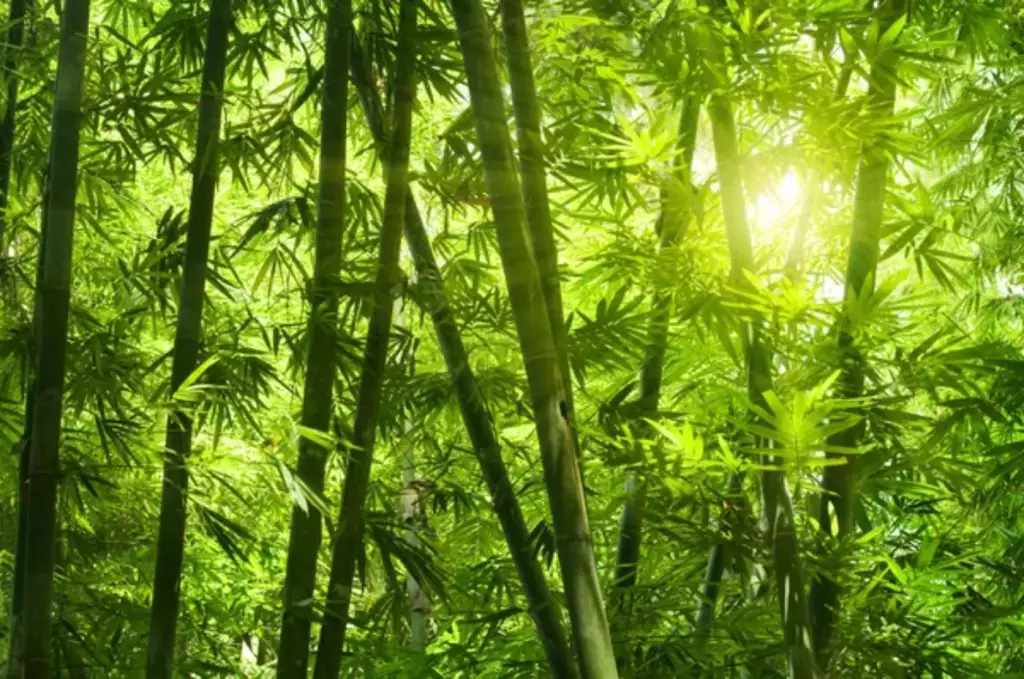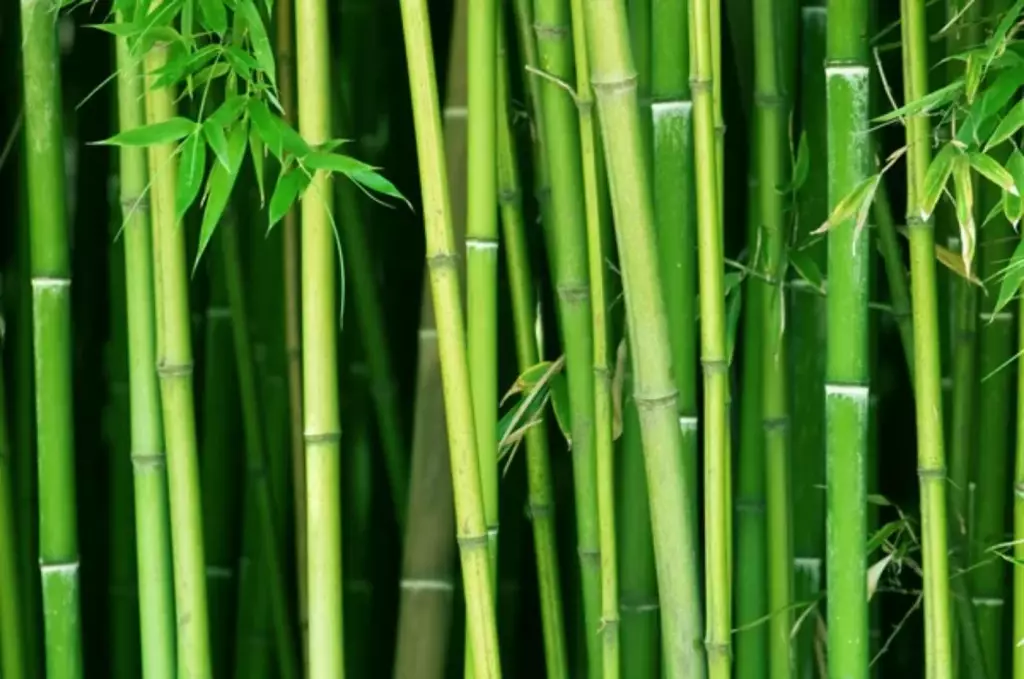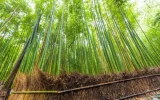How Many Tons of Bamboo Can You Expect per Acre?
Bamboo holds significant potential for sustainable cultivation due to its high biomass yield and versatile applications. In this article, we will explore the yield dynamics of bamboo cultivation, detailing the factors that influence how many tons of bamboo you can harvest per acre.
On average, a well-managed bamboo grove can produce about 20 to 40 tons per acre annually. However, optimal conditions and species like Guadua or Phyllostachys can yield higher amounts. The yield of bamboo per acre varies widely, depending on species, climate, and cultivation practices.
Did you know that bamboo farming could be a bit of a geographical lottery? That's right, depending on where you set down roots—literally—the average yield per acre swings wildly due to climate, soil, and the bamboo species you choose. Let's find out how bamboo yield varies depending on region.
Summary
- The yield of bamboo per acre varies significantly among species, ranging from 5 tons per acre for Phyllostachys edulis to up to 40 tons per acre for Guadua angustifolia.
- Bamboo yield per acre is highly dependent on geographical location, with Asia (India) and South America showing significantly higher yields (35–50 tons and 40 tons per acre, respectively) compared to North America and Europe (5–25 tons and 10–20 tons per acre, respectively).
- Bamboo cultivation, particularly with species like Phyllostachys edulis and Bambusa oldhamii, offers significant economic and environmental benefits, including profits up to $30,000 per acre and advantages like carbon sequestration.

On this page:
Bamboo Varieties and Their Average Yield per Acre
Each type of bamboo has its growth rate and potential yield, which can influence your bamboo cultivation success.
| Species | Common Name | Yield Estimation per Acre |
|---|---|---|
| Guadua angustifolia | Guadua Bamboo | Up to 40 tons |
| Dendrocalamus asper | Asper Bamboo | 30-35 tons |
| Phyllostachys edulis | Moso Bamboo | 5-10 tons |
| Bambusa oldhamii | Giant Timber Bamboo | 20-25 tons |
| Bambusa vulgaris | Common Bamboo | 15-20 tons |
| Bambusa tulda | Tulda Bamboo | 15-20 tons |
| Gigantochloa apus | String Bamboo | 20-30 tons |
Bamboo Yield per Species
-
Guadua angustifolia: Often used in construction due to its strength, Guadua can yield up to 40 tons per acre. It's a type of clumping bamboo known for its impressive biomass output upon maturity.
-
Dendrocalamus asper: Also known as Asper bamboo, this species is favored for its fast growth and can produce about 30-35 tons per acre.

-
Phyllostachys edulis: This species is highly valued for its wood quality and is extensively used in the production of bamboo flooring, furniture, and crafts. It's one of the largest species of bamboo and can grow up to 2-4 feet annually under optimal conditions. It can produce approximately 20-25 tons per acre.
-
Bambusa bambos: Known for its thick walls and high strength, this species is commonly used in construction and for making furniture. It's a fast-growing species that also helps in soil erosion control. It yields about 15-20 tons per acre.
-
Bambusa vulgaris: This species is widely cultivated around the world and is known for its versatility. It's used in construction, to make utensils, and also in the paper industry. It can vary widely, but generally around 10-15 tons per acre.
-
Bambusa tulda: This species is important in paper manufacturing due to its fiber quality. It's also used for making musical instruments and as a building material. It yields approximately 15-20 tons per acre.
-
Gigantochloa apus: Often used in traditional construction and crafts, especially in Southeast Asia. It's known for its long and strong culms. It yields roughly 20-30 tons per acre.
A longer list of different bamboo species and their average yield per acre can be found in this article.
Average Bamboo Yield per Acre for Different Regions
| Location | Expected Yield (tons/acre) |
|---|---|
| Asia (India) | 35-50 |
| South America | 40 |
| North America | 5-25 |
| Africa (Ethiopia) | 20-30 |
| Europe | 10-20 |
Average bamboo yield in Asia
In Asia, particularly in countries like India, bamboo is traditionally a high-yield crop due to optimal growing conditions such as warm temperatures, ample sunlight, and suitable soil pH levels.
For example, Beema bamboo can yield up to 35 tons per acre in the initial years. With good management and ideal growing conditions, yields can potentially increase to 40-50 tons per acre annually after the plants mature.
Average bamboo yield in South America
Bamboo yields are impressive in parts of South America, especially with species like Guadua, which can yield up to 40 tons per acre.
Southeast Asia also boasts high returns due to its tropical climate, which is highly suitable for bamboo growth.
Average bamboo yield in North America
In comparison, growing conditions in North America might not be as conducive to bamboo farming as in Asia. This could result in lower yields, necessitating a deeper investigation into the specific regional climate and soil conditions before you embark on bamboo cultivation.
Average bamboo yield in Africa
The continent has started to recognize bamboo's potential, especially in East Africa, where countries like Ethiopia are leading in bamboo cultivation.

The climate varies greatly across Africa, but areas with tropical climates, similar to Southeast Asia, can support bamboo cultivation effectively.
Given the right conditions, species like Oxytenanthera abyssinica (common in Ethiopia) can produce substantial yields. Let's estimate the yields based on available data and agricultural practices.
Average bamboo yield in Europe
Europe's climate is more temperate, with few areas suitable for bamboo cultivation on a commercial scale. However, innovative agricultural techniques and the use of greenhouses could allow for the cultivation of certain bamboo species.
The yields in Europe would be highly dependent on the level of investment in these cultivation techniques and the species selected.
Factors Affecting Bamboo Production
When you're planning to grow bamboo, several factors will influence the yield you can expect per acre:
Your bamboo's environment plays a critical role in its growth and yield
Species of bamboo have different temperature and sunlight preferences, with clumping bamboo usually more suited to cooler climates and running bamboo thriving in warmer areas.
Climate is a major determinant since extreme weather can impede growth. Soil quality must be well-drained yet retentive of moisture, supplemented by adequate water and irrigation to prevent drought stress.
The individual growth attributes of bamboo plants largely determine production outcomes
Different bamboo species will naturally produce varying quantities of bamboo. Nutrition is essential; using the right fertilizers can significantly boost your yield.
Nitrogen-rich organic compost can feed the bamboo adequately, while proper mulch can retain soil moisture and maintain soil temperature, facilitating better rhizome health and spread.
Achieving a high-yield bamboo plantation hinges on cultivation techniques
Planting density and the spacing of your plants are crucial. Dense plantations yield more, but there must be enough space for each plant to obtain the required nutrients and sunlight.
The planting method and propagation technique directly affect growth; while running bamboo can spread through rhizomes, clumping bamboo will require more strategic planting.
Employing the best practices, such as irrigation schedules and nutrient management, will optimize your bamboo's productivity.
Farming Practices to Enhance Bamboo Yield
Optimizing your bamboo farming practices can lead to a more bountiful harvest, influencing both the quantity and quality of your yield.
Soil preparation and management
Bamboo thrives in slightly acidic soils with a pH ranging from 5.5 to 7.0. Test your soil and amend it accordingly – adding organic compost can improve nutrient content and soil structure.
Also, consider proper mulching to conserve moisture and reduce weed growth.

Plantation management
Once your soil is prepared, focus on the plantation management strategies that can heighten productivity. Proper spacing allows each bamboo plant enough room to grow – typically, 5x5 feet spacing works well.
Regular weed control is imperative to prevent nutrient competition. For irrigation, provide a consistent water supply according to the growing conditions, especially during dry spells.
Implementing a cycle of rotation with other crops can also rejuvenate the soil. Ensure that your harvesting techniques are gentle to prevent damage to young shoots.
How Much Does Bamboo Make per Acre?
| Bamboo Species | Type | Estimated Price per Plant/Seedling (USD) | Estimated Initial Investment per Acre (USD) | Estimated Profit Range per Acre per Year (USD) |
|---|---|---|---|---|
| Phyllostachys edulis | Timber Bamboo | $5 - $10 | $1,000 - $2,000 | $5,000 - $30,000 |
| Bambusa oldhamii | Timber Bamboo | $5 - $10 | $1,000 - $2,000 | $5,000 - $30,000 |
| Phyllostachys bambusoides | Shooting Bamboo | $4 - $8 | $800 - $1,600 | $3,000 - $20,000 |
| Dendrocalamus asper | Shooting Bamboo | $6 - $12 | $1,200 - $2,400 | $4,000 - $25,000 |
| Fargesia murielae | Ornamental Bamboo | $10 - $20 | $2,000 - $4,000 | $2,000 - $15,000 |
| Bambusa multiplex | Ornamental Bamboo | $8 - $16 | $1,600 - $3,200 | $1,500 - $10,000 |
Profitability factors for ornamental bamboo
Ornamental bamboo species are primarily grown for landscaping and decorative purposes. They are popular in residential and commercial gardens, public parks, and for indoor decoration.
The market for ornamental bamboo is driven by aesthetic appeal, with certain species commanding higher prices due to their unique characteristics, such as color, leaf shape, or growth habit.
- Initial investment: Higher due to the need for more care in cultivation and marketing. Ornamental bamboos often require more sophisticated packaging and handling to maintain their aesthetic appeal during transport. A more detailed breakdown of the cost per acre for planting bamboo can be found in this article.
- Market price: This can be high, especially for rare or exotic varieties. However, the market is niche, and sales volumes might be lower compared to timber or shoot bamboo.
- Maintenance costs: Can be higher due to the need for regular pruning, pest management, and other aesthetic maintenance practices.
- Return on investment: May take longer due to the niche market, but high-value species can yield significant profits per unit.
Profitability factors for timber bamboo
Timber bamboo species are grown for their strong, fast-growing culms (stems) that are used in construction, furniture making, and as a raw material for various products like utensils, bicycles, and even textiles. They have a broad market appeal due to the sustainability and versatility of bamboo as a wood alternative.
- Initial investment: Moderate to high, depending on the scale of the operation and the cultivation methods used. However, timber bamboo has a relatively faster growth cycle compared to traditional hardwoods.
- Market price: Generally stable and potentially high for mature, high-quality culms. The demand for sustainable building materials can drive up prices.
- Maintenance costs: Moderate. Timber bamboo requires less aesthetic maintenance but needs proper spacing, fertilization, and harvesting tools.
- Return on investment: This can be rapid due to the fast growth rate and high volume of biomass produced. Timber bamboo can start yielding harvestable culms in 3-5 years, with annual harvests thereafter.
Profitability factors for shooting bamboo
Shoot bamboo species are cultivated for their edible shoots, which are a delicacy in many cuisines around the world. The market for bamboo shoots is primarily food-oriented, including fresh markets, the canned food industry, and specialty gourmet products.

- Initial investment: Lower to moderate, as the focus is on maximizing shoot production rather than maintaining culm or aesthetic quality.
- Market price: This varies widely based on the species, freshness, and market demand. Fresh shoots command a higher price, especially in local markets or in regions where bamboo cuisine is popular.
- Maintenance costs: Moderate, with expenses going towards ensuring optimal shoot growth, pest management, and harvesting labor.
- Return on investment: This can be quick, as some species can produce marketable shoots within 1-2 years of planting. Regular harvesting encourages new growth and can yield multiple harvests per year, depending on the climate and species.
To learn more about the profitability of an acre of bamboo, check out this article.



